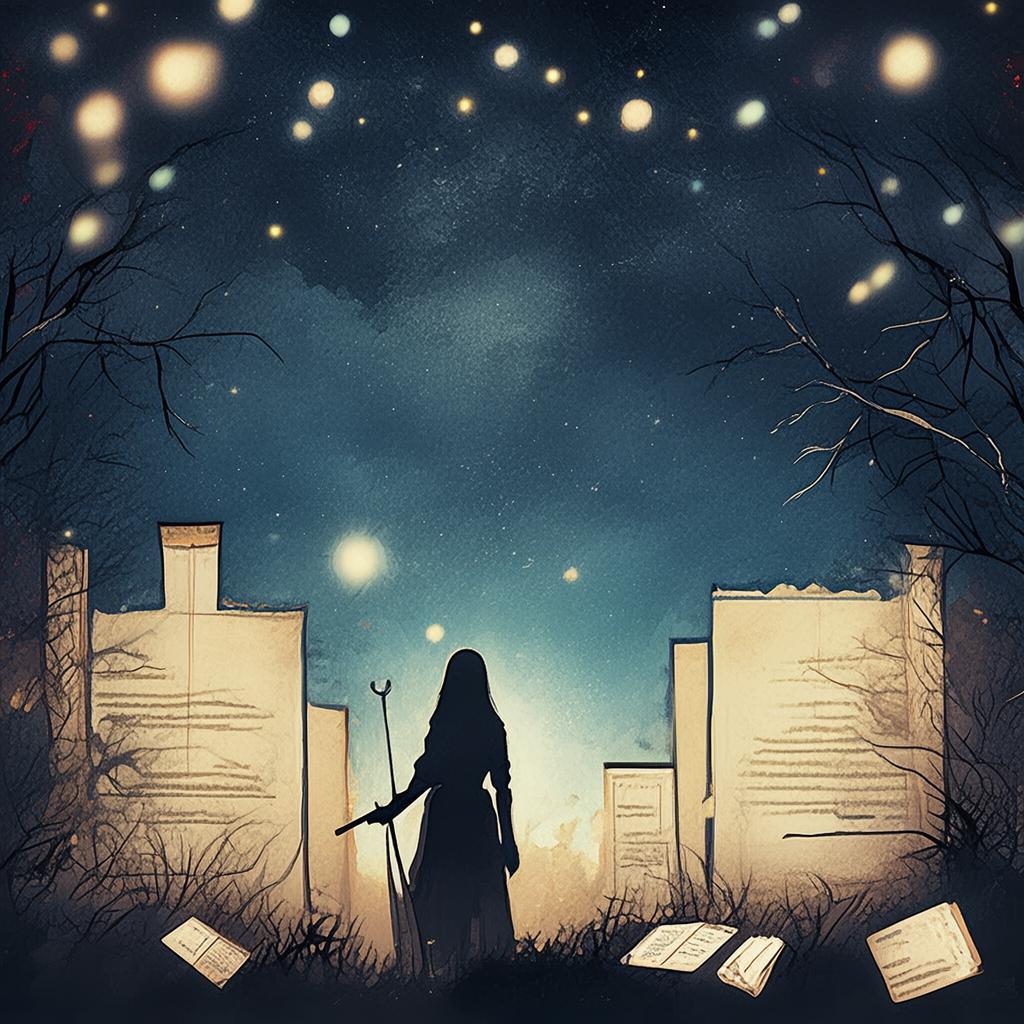The Paradox of Timeless Fashion
The bustling streets of 19th-century Paris were a sea of vibrant colors, where the air was thick with the scent of flowers and the sounds of laughter. Amidst the chaos, a young woman named Elara stood, her eyes scanning the scene with a mixture of wonder and longing. She was a modern-day fashion designer, but her heart belonged to the elegance and grace of bygone eras.
Elara's designs were a testament to her love for the past; her collections were steeped in historical fashion, each piece a nod to the styles of centuries past. Yet, she felt a void, a disconnect from the very time she adored so much. She yearned to truly live in that era, to be part of the stories that unfolded in the streets around her.
One day, while rummaging through an antique store, Elara stumbled upon an old, dusty journal. It was the journal of a 19th-century dressmaker, filled with intricate patterns and tales of the fashion world as it was. As she read, a peculiar symbol caught her eye—a symbol she recognized from her own design work.
The next thing Elara knew, she was no longer in the antique store, but in the very streets of Paris. The air was crisp, and the scent of fresh flowers filled her nostrils. She looked around in awe, taking in the scene—cars had been replaced by horse-drawn carriages, and the fashion was as she had designed it.
Elara approached the dressmaker, now an elderly woman, who looked at her with a knowing smile. "You are not the first to feel the call of this journal," the dressmaker said, "but you are the first to embrace it fully."
Over the next few months, Elara worked alongside the dressmaker, learning the craft of historical fashion and becoming an integral part of the local community. She fell in love, married, and even had a child, all within the walls of that time period. Yet, there was always a part of her that felt like a ghost, a reminder of the life she left behind.
As time passed, Elara's designs began to take on a life of their own, evolving from simple replicas to pieces that seemed to have been created in the past. Her garments became a bridge between eras, with modern techniques and materials seamlessly woven into historical designs.
But the more Elara embraced her role in the past, the more she realized that she was changing it. Her presence, her actions, had the power to alter the very course of history. She began to fear that her designs, while beautiful, were a dangerous game with the fabric of time.
One day, as Elara was working on a particularly intricate piece, the dressmaker called her into the workshop. "Elara, you must choose," she said. "Stay here and continue your work, or return to your own time."
Elara's heart raced. She had spent years crafting her designs, building a life she thought was perfect, yet she knew she couldn't stay. "I need to go back," she whispered.

With a solemn nod, the dressmaker handed her the same symbol from the journal—a symbol that had become her lifeline. As Elara stepped into the symbol, she felt herself pulled through a swirling vortex of light and shadow.
When Elara awoke, she was back in her own home, in the present. The journal lay open in front of her, and she saw that the final entry had been written just before her journey. It read, "The fabric of time is delicate. We must handle it with care."
Elara looked around at her work, now a mix of past and present, and realized that the paradox of her time-traveling designs was not just about history and fashion; it was about the delicate balance of life, the past, and the future. She had to decide if her passion for the past was worth the risk of changing it forever.
In the end, Elara chose to continue her work, but with a new understanding of the impact of her designs. She created a line of garments that honored the past while acknowledging the present, blending her love for historical fashion with the advancements of modern times. The line became an instant hit, and Elara found herself not only a successful designer but also a symbol of the Retro Renaissance—a bridge between eras, connecting the timeless with the forever-changing.
✨ Original Statement ✨
All articles published on this website (including but not limited to text, images, videos, and other content) are original or authorized for reposting and are protected by relevant laws. Without the explicit written permission of this website, no individual or organization may copy, modify, repost, or use the content for commercial purposes.
If you need to quote or cooperate, please contact this site for authorization. We reserve the right to pursue legal responsibility for any unauthorized use.
Hereby declared.









